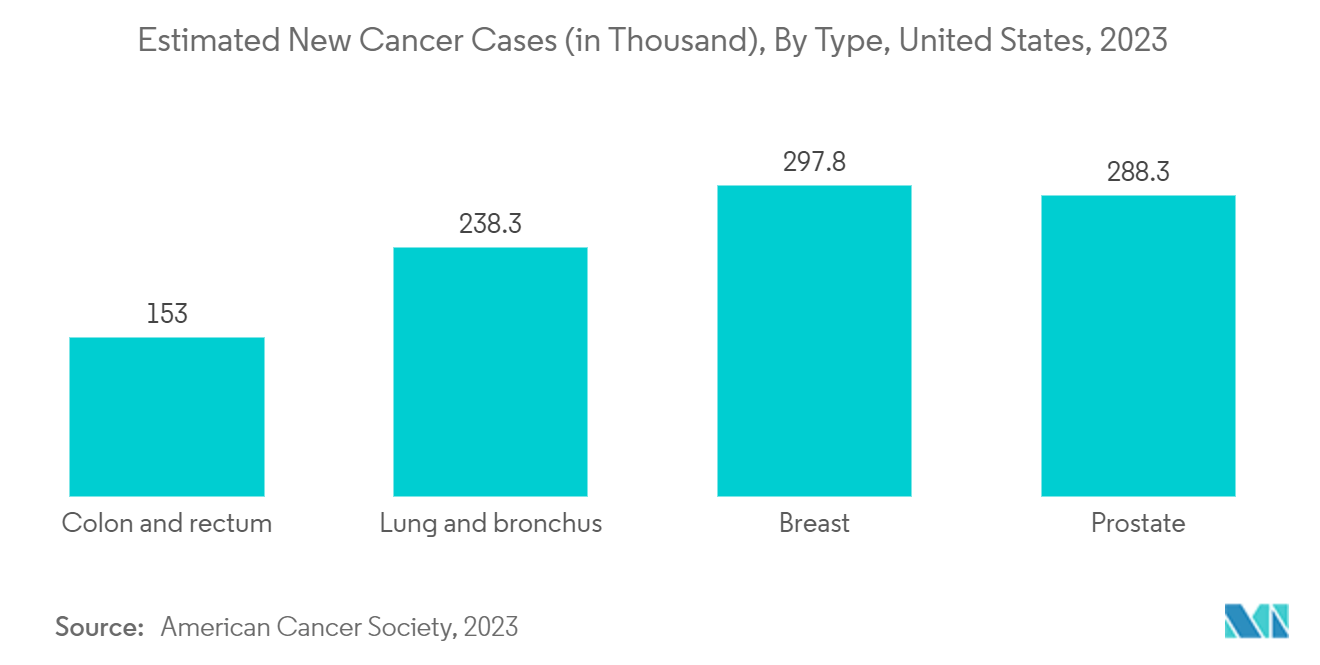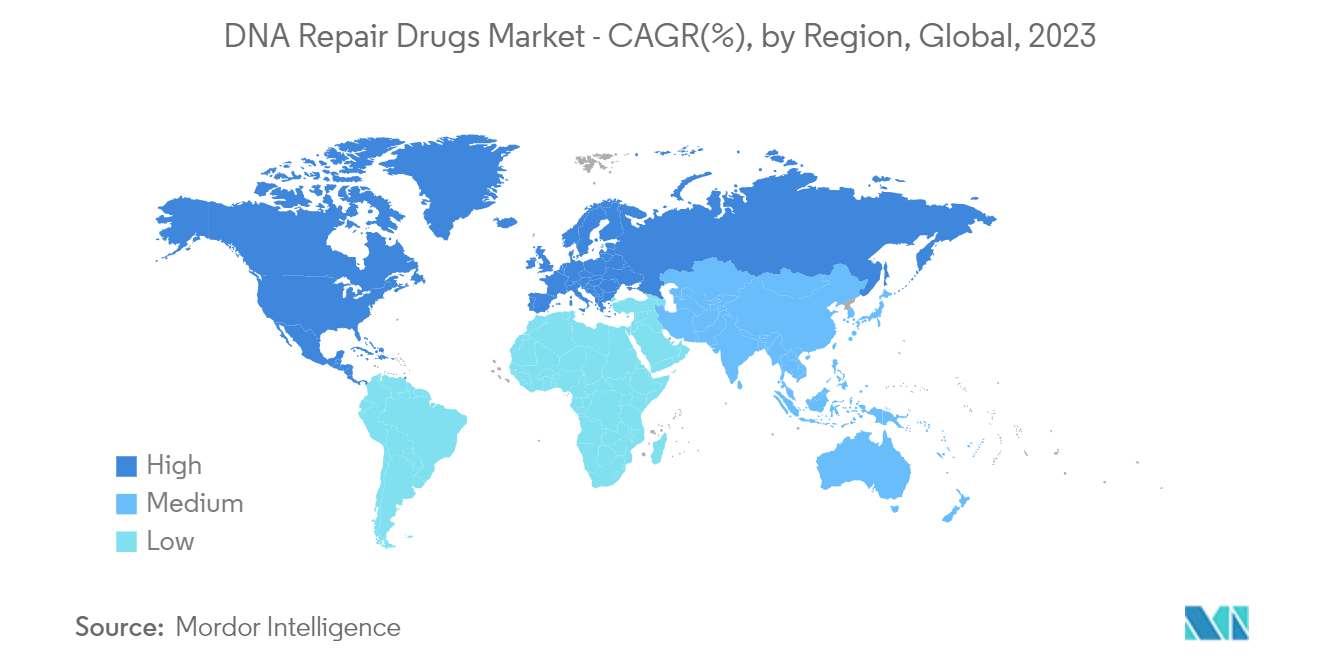Market Trends of DNA Repair Drugs Industry
Olaparib Segment Expected to Hold a Significant Share in the Market Over Forecast Period
Olaparib is a base-excision repair (BER) enzyme inhibitor that prevents poly-ADP ribose polymerase (PARP), which is involved in the repair of DNA damage caused by oxidative stress. Olaparib is sold under the brand name Lynparza. The advantages offered by Lynparza, such as its demonstrating a statistically significant and clinically meaningful improvement in invasive disease-free survival (iDFS), reducing the risk of cancer recurrences, second cancers or death, and high progression-free-survival rate, over the other DNA repair drugs (rucaparib, niraparib, and others) raises its adoption in cancer treatment. This is anticipated to fuel the segment's growth over the forecast period.
The combination usage of olaparib with other oncology drugs is increasing the efficacy in cancer treatment, which is likely to increase the usage of olaparib, thereby boosting segment growth over the forecast period. For instance, an article published in the Clinical Cancer Research journal in January 2024 reported that olaparib with durvalumab and bevacizumab demonstrated notable clinical activity in women with non-gBRCAm platinum-sensitive relapsed ovarian cancer (PSROC). These combination treatments are expected to increase the usage of olaparib and increase its adoption during cancer treatments, which, in turn, is anticipated to fuel the segment’s growth over the forecast period.
Furthermore, increasing product approvals raise the availability of effective DNA repair drugs in the market, which is also contributing to market growth. For instance, in May 2023, AstraZeneca Pharmaceuticals received approval from the US Food and Drug Administration (FDA) for olaparib (Lynparza) with abiraterone and prednisone (or prednisolone) for adult patients with deleterious or suspected deleterious BRCA-mutated (BRCAm) metastatic castration-resistant prostate cancer (mCRPC).
Therefore, owing to factors such as rising product approvals and increasing adoption of olaparib due to its numerous advantages over other drugs, the segment studied is expected to grow over the forecast period.

North America Expected to Hold a Significant Share in the Market Over the Forecast Period
North America is expected to witness significant growth in the DNA repair drugs market over the forecast period owing to factors such as the increasing focus on research and development, the growing number of investments in DNA repair research, and the growing burden of cancer in the region.
The increasing incidence and prevalence of various cancers among the population boost the demand for DNA repair drugs, which is anticipated to fuel market growth. For instance, according to 2024 statistics published by the American Cancer Society, about 2.00 million new cancer cases (1.03 million males and 0.97 million females) are expected to be diagnosed in the United States in 2024, compared to 1.96 million cases in 2023. This shows the increasing incidence of cancer cases in the United States, which is expected to drive the usage of DNA repair drugs, thereby boosting market growth over the forecast period in the region.
Additionally, according to statistics published by the Canada Cancer Society, an estimated 239 thousand Canadians were reported with new cancer cases in 2023. As per the same source, lung and bronchus cancer is the most prevalent malignancy in Canadians. Hence, the high burden of cancer cases among the population is expected to increase the demand for effective treatment options, which is anticipated to propel market growth in the region.
Furthermore, the increasing activities in developing cancer drugs also contribute to market growth. For instance, in July 2023, AstraZeneca received a Notice of Compliance with Conditions (NOC/c) from Health Canada for Lynparza (olaparib) in combination with abiraterone and prednisone or prednisolone for the treatment of adult patients with deleterious or suspected deleterious germline and somatic BRCA mutated metastatic castration-resistant prostate cancer (mCRPC). Therefore, the market studied is expected to grow over the forecast period due to factors such as the high burden of cancer and increasing research activities, which are likely to boost the demand for DNA repair drugs in the region.


